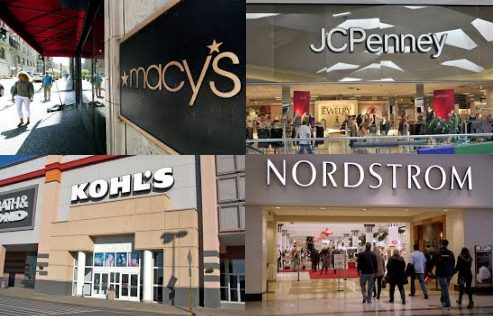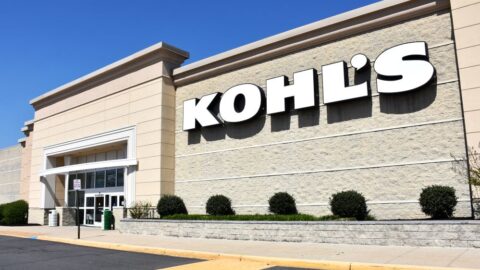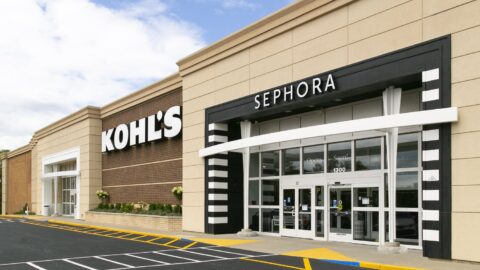If Q1 financial earnings reports were any indication, traditional department stores had a very rough ride to start 2016. While Amazon continues to ride high off its fourth straight quarter of profit increases, the results for Macy’s, Nordstrom, Kohl’s, Gap and JCPenney are painting a far different picture of how these big players are handling shifts in consumer behavior and expectations.
To put into perspective how these retailers have struggled, here are some of the unfortunate Q1 statements from the big name department/apparel retailers:
-
Macy’s had an overall sales decline of 7.4% and a dip in same store sales of 6.1%, marking the fifth quarter in a row same-store sales have declined;
-
Kohl’s revenue dipped 3.7%, with quarterly net income falling a whopping 55%;
-
Nordstrom had comparable store sales declines of 1.7%,while earnings missed expectations by $0.20 per share;
-
Gap same store sales plunged 7%, which looks even worse considering the retailer expected a 0.5% gain in that department; and
-
JCPenney, which actually performed the best of the bunch, had an overall revenue drop of 1.6%, narrowing its losses from $150 million to $68 million.
Retail Rolls On Despite Department Stores’ Difficulties; Where’s The Disconnect?
Despite the poor performance of department stores, the retail industry as a whole actually did well for itself, according to U.S. Census Bureau statistics. Industry sales rose 1.3% in April, marking the largest gain in the past year and indicating that consumers are still willing to spend.
Seeing the struggles of its apparel-centric counterparts, JCPenney is focusing more of its offering on major appliances, window coverings and home furnishing assortments, as well as expanding the number of Sephora shops within its physical stores. While apparel as a category continues to struggle (although some specialty apparel retailers are thriving), beauty and home improvement/furnishing departments are still very much thriving, due to consumers’ need to test out these products in person.
For example, The Home Depot reported a 14% net income increase and a 9% rise in Q1 total sales, with same store sales in the U.S. climbing 7.4%. Comparably, Lowe’s saw a 7.5% increase in U.S. same store sales in the quarter, with an impressive 31% boost in net income.
The continued success of these individual retail categories, in addition to increasing consumer preferences for experiential shopping, should give hope to smaller retailers looking to gain a better entry point into the market. These brands aren’t immune to the perils faced by the established players, but the flexibility with which some can operate can make up for smaller budgets.
Off-Price Finds Success Where Department Stores Falter
Brands such as T.J. Maxx have capitalized on the errors of the department stores, with the off-price retailer’s parent company, TJX, boosting Q1 comparable store sales by 7% and increasing earnings per share by 10%. While discounting has been a major issue for department stores as they desperately try to move unsold merchandise, T.J. Maxx and Marshalls have built a model on purchasing this merchandise and pricing it more cheaply from the start.
Better performance by value-oriented retailers may be the result of larger economic trends. “We’re seeing a demographic shift that goes with the overall economy as far as the middle class shrinking,” said Andy Wong, Partner at consultancy Kurt Salmon Digital. “Also in that middle class, where companies such as Nordstrom or Macy’s play, consumers are getting more sophisticated, so it comes down to the retailers competing with the brands they already carry. These days, it’s so easy to go to a brand store. We’ll probably see some shoppers fall out of the department stores’ demographic and go more towards discount retail, which is still doing very well.”
Can Department Stores Save Themselves By Closing Up Shop?
It may have taken a while for many of these department stores to consider that they will have to close stores in order to keep from bleeding money, but an eye-opening survey from Green Street Advisors strongly suggested that this is exactly the action these big brands retailers may need to take. The report identified the number of locations major retailers would need to close in order to restore their 2006 productivity levels.
With JCPenney recommended to close 320 stores, Sears recommended to close 300 and Macy’s suggested to shutter 70, it’s clear that these merchants haven’t been using their store space wisely, let alone finding ways to optimize profitability per square foot.
“Certainly the small format is going to be better for a lot of these traditional brands,” Wong said. “It allows them to penetrate the urban areas better. At this stage, it’s hard for these brands to put a big store in the middle of Manhattan.”













